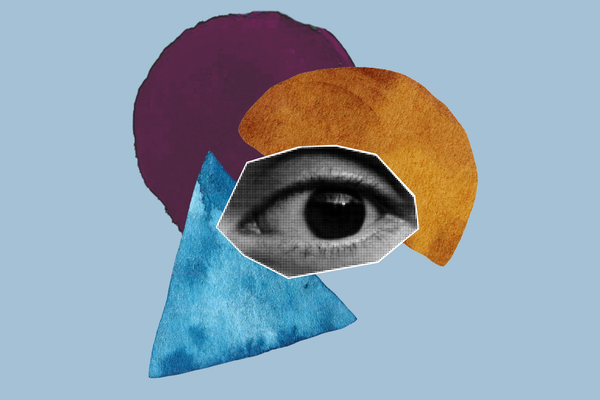Our handy research glossary


Card sorting? UX? Responsive design? It can be a bit tricky to navigate the world of paid research and the sometimes confusing words that come with it. Our research glossary aims to help our participants make sense of the terms used in the industry.
A
Accessibility testing relates to usability testing whose aim is to determine how accessible a product or service is by a range of individuals with a variety of accessibility needs. This can range from those with mild impairments (such as cognitive, mobility, visual or hearing) through to those who require assistive technologies (specific software or hardware).
Accompanied shops or store treks are fun. A researcher will accompany you (or a small group of people) to a shop or multiple shops to observe your behaviour and talk to you about your decision-making processes.
App testing sessions will involve a program or piece of software which is downloaded by a user onto a mobile device, and designed to fulfil a particular purpose. The user will need to test out the app and give their feedback.
B
Branding packaging, logos and design of a product or service are part of the visual identity of any brand. They have to be appealing to the human eye, easy to remember and functional.
C
Card sorting is a simple research technique to help design or evaluate the information architecture of a website or menu structure. During a card sorting session, you will be asked to organise topics into categories in a way that makes sense to you. You might also be asked to label the groups you organised during the session.
Client is the company or organisation running the research project. We work closely with our clients to make sure we recruit the right participants to take part in their paid research studies.
D
Device is usually any piece of electronic equipment like your laptop or smartphone, but can also be generally described as an object made or adapted for a particular purpose.
Diary study is how we define a paid study that lasts for several days, weeks or even months. Diary studies usually include a number of tasks that participants must complete before a deadline. They take longer, but the incentives are also higher!
E
Eligible (or suitable) is the word we use to describe any participant that can take part in research. Being an eligible participant means that you satisfy the conditions listed by the client for a specific study.
F
Focus groups are informal group discussions led by one researcher (usually called a moderator) or a research team. Sessions range in size from three through to 12 or more people. Topics of discussion vary widely and may include reviewing a service (like banking) or a product you have recently purchased (a new car or insurance), commenting on new media or advertising, or discussing sector specific topics in relation to defined occupations.
G
Game testing does what it says on the tin. If you take part in a game testing session, you get to test current games or gaming prototypes. Exciting!
General Data Protection Regulation (GDPR) is the current data protection legislation that we are compliant with. This regulation controls how we hold, manage, share and retain our clients' and participants' personal data. People for Research make sure that we keep up to date with this legislation and any changes to it to ensure that your data is secure.
I
Incentives are the client’s way of saying thank you for your time and commitment when taking part in paid research. Most frequently, participants can choose between a bank transfer or a voucher, except in limited cases where we only offer one of these options. However, some paid research studies might also offer the opportunity to make a charity donation or enter into a prize draw. Our current average incentive is £80 for one hour of your time, and our prize draws usually offer a £300 prize to one lucky participant.
Inclusive design is a design approach that aims to create fully accessible digital products and services, as well as inclusive products that make everyone feel included and welcome.
In-depth interview (or 1-2-1 interview) involves one or two participants plus a member (or members) of the research team. This is an information chat between client and participant that may cover a wide range of topics.
In-home interview (or workplace interview) is a research session that happens in your home, workplace or a location that is part of the participant's routine. This means a researcher (or researchers) will visit your house or workplace with your consent to conduct the session and observe you in your natural environment. Researchers can be asked to provide DBS checks and present ID before entering your house or workplace.
M
Market research is the name given to any organised effort carried out by a company or organisation in order to gather information about target markets or customers. It includes both social and opinion research provided by participants like you, allowing businesses and organisations to get an overview of the consumers’ desires, needs and beliefs.
Market Research Society (MRS) is the professional body that governs our sector’s activities and sets guidelines for best practice. We abide by and adhere to their code of conduct.
Moderator is the person who conducts the market research session. Also referred to as the ‘researcher’.
O
Online focus group is pretty much the same as an in-person focus group, but the main difference is that this takes place online. To take part you will need to log in using a laptop or a mobile device and join a session.
P
Paid research is the umbrella term for all of our research types, including focus groups, user testing, telephone interviews, diary studies, etc.
Participant is you! The person that takes part in paid research.
Product placement testing means you will receive a product to test at home or work for a specific period of time (usually a few days or weeks). During this testing period, you are likely to be asked to complete surveys or a diary study to share your feedback about the product as time goes by.
Q
Qualitative research is the type of research that targets longer and more complex non-statistical data, as opposed to quantitative research. Individual in-depth interviews or group discussions are examples of qualitative research.
Quantitative research is used to quantify data and obtain general ideas about the population of interest through the analysis of statistical data. Structured techniques like online questionnaires or high-volume phone interviews are two examples of quantitative research, which in some cases can be complemented with quantitative research at a later stage of the process.
R
Remote testing refers to any research session where the researcher and participant are not interacting face-to-face. Remote testing allows the research teams to speak to people who do not live in the same place and to reach out to a wider audience in different geographical locations for one project. If you take part in a remote session, you will need to be online and may be asked to use screen-sharing software which allows you to communicate and show your screen to the researcher(s) at the same time.
Researcher is the person who conducts the market research or usability testing session. The researcher may also be referred to as a ‘moderator’.
Responsive design is a design approach that aims to create digital products and services that provide an optimal viewing and interaction experience across a wide range of devices, from your smartphone to your desktop.
S
Screener (or screener questionnaire) is a document we use at PFR that contains a range of questions asked to a participant to determine if they are eligible to take part in a research project. You will only go through the screening process if one of our team members contacts you directly via telephone.
Survey is a descriptive research method. Researchers usually do surveys when they want to collect data on occurrences that cannot be directly observed or need to collect high volumes of statistical data.
T
Treejack (or reverse card sorting / card-based classification) is a technique that allows participants to test a website and how easily they can find topics within a platform without the influence of navigation aids and visual design. Tree testing is done on a simplified text version of the product that is being evaluated.
U
Usability is the word used to define the ease of use of a human-made object or piece of software. During a usability testing session, you might test a software application, website, product, process or anything else a human might interact with.
Usability testing is a type of research where participants are usually asked to follow some simple instructions and to navigate around a website, mobile app, software system or prototype. This helps the research team understand if their product is user-friendly and what changes can be made to make it easier to use.
User is quite simple to explain: it’s you! Whenever you are browsing the web or downloading a new app, you become a user of a product or service.
UX (User Experience) is quite self-explanatory once you move past the acronym. User experience includes all aspects of the end-user’s (also called consumer) interaction with a product, software application, website, process, or service.
W
Website testing involves taking a look around a client’s website, and often completing a series of tasks such as booking flights, finding various areas of the website, going through the shopping checkout, or saving things to a wishlist. You may be asked to record your screen while you do this, and vocalise your feedback as you go.



